Following the victory over Nazi Germany in WW2, the United States and the Soviet Union wasted no time gathering trophies all over Germany, including many rocket scientists and middle and long-range rocket designs.
While the US recruited the famous German rocket scientist Wernher Von Braun, best known as the designer of the Saturn V rocket, which took the man to the Moon, the Soviets satisfied their technology lust by capturing hundreds of German engineers and seizing A-4 rockets. The Truman Doctrine accepted by the US government in 1947 marked the beginning of the Cold War era, as the political aggression between the two countries found new ground to unleash itself: Space exploration.
The first breakthrough gained by German technology was the Sputnik 1 satellite, which was launched in 1957. The first-ever satellite launched into space made such an impact on the US that their answer came just a year later with the establishment of the government’s exclusive search and development agency, DARPA.
The cold and exhausting space exploration period came with Sputnik 1, which witnessed the death of dozens of astronauts and cosmonauts. One of them, maybe the most remarkable story of this period, is Vladimir Komarov, whose death clearly depicts the extreme conditions of the space race between the Soviets and the US.

The Architects of A Catastrophe: Vain and Impatience
After Yuri Gagarin gained the title of “the first man in space” in April 1961 (US astronaut Alan Shepard was launched into low orbit just 23 days after Gagarin’s success), the new target was to reach the Moon. Soviets had a glorious plan for the first manned mission towards the Moon: Two spacecraft would be launched with a one-day gap and rendezvous in orbit. Later, they would connect in the orbit and continue with an EVA mission (extravehicular activity).
For the historical mission, Soviets were planning to use the “Soyuz” spacecraft, designed by the leader of the Soviet space program Sergey Korolev and defined as the “machine of the future.” The man who would take part in this mission was Vladimir Komarov, who was among the top three cosmonauts of Soviet Russia.
Komarov entered the First Moscow Special Air Force School when he was only 15. Upon completing his basic education and training, Komarov joined the Soviet Air Forces as a lieutenant. In March 1960, he was among the 20 candidates chosen among 3.000 candidates for the Vostok programme. Komarov was put behind in the line by Korolev just because he was older than the preferred age limit. Thus, Gagarin became the first among the chosen ones and made history by being the first man in space.
His first major career success came on 12 October 1964 when Komarov flew over Earth inside the Voskhod 1 spacecraft. The seventh manned space mission in the history of Soviet Russia came with many achievements while carrying the first signals of the incoming tragedy.
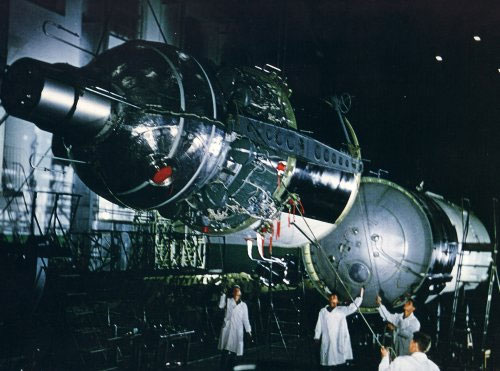
Voskhod 1 was the first-ever spacecraft with more than 1 crew capacity and broke the altitude record as it reached 336 kilometres above the ground. Commander Komarov, flight engineer Konstantin Feoktistov and doctor Boris Yzegorov were sent to space without proper spacesuits. The reason was the stubbornness of the Russian officials to stuff three cosmonauts into a spacecraft which was actually designed for two. They wanted the launch of the first mission, which included a space engineer and a doctor. Komarov managed to make radio transmissions for the Tokyo Olympic Games on the 10th of October and successfully landed Voskhod 1 after a very uncomfortable journey.
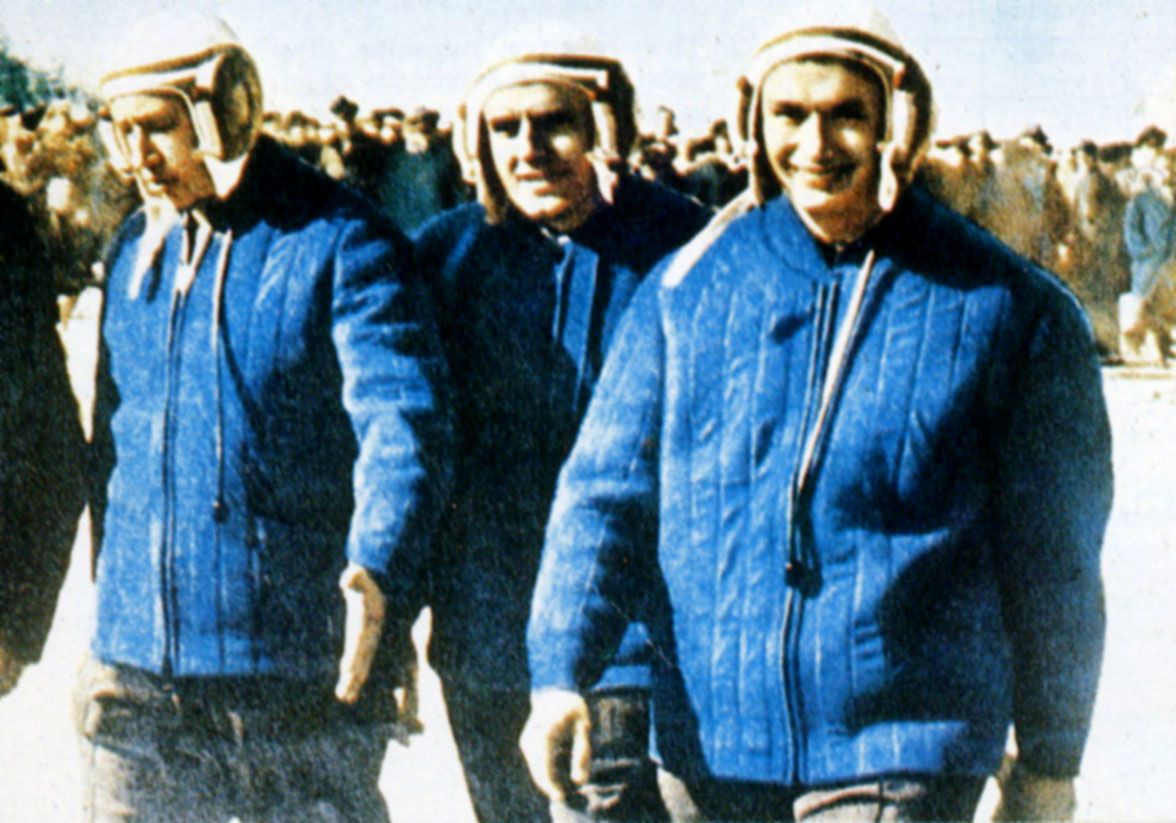
Challenging the Impossible
After his success in the Voskhod-1 mission, Komarov was chosen for the Soyuz 1 programme along with Yuri Gagarin in 1966. The mission made Komarov anxious from the beginning; nevertheless, his arms were tied against the arrogance of the Russian officials. The same year Sergey Korolev, the only person who could delay the mission, passed away.
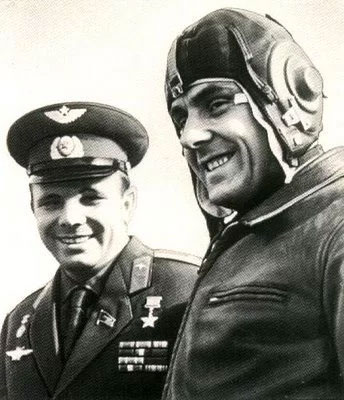
Russian officials were terribly impatient due to the 10 manned Gemini space missions the US launched between 1965 and 1966. An urgent answer was a must, and it must be a big one to counter the Gemini space programme. The first step of the plan was to launch Komarov to space with Soyuz 1. A day later, Soyuz 2, with three crew members, would be launched and connect with Soyuz 1 in low orbit. Then, cosmonauts would perform EVA.
Unfortunately, Soyuz 1 went through a very hasty development process and no matter how many times Komarov had an argument over the technical issues they were left unaddressed. According to space historian Amy Shira Teitel, there were in total 203 technical issues with Soyuz 1. Opening his thoughts to his friend Venyamin Russayev before the mission, Komarov said: “he was going to die.” Yet, he rejected the idea of withdrawing from the mission to not be replaced by his close friend Yuri Gagarin and endanger his life.
The first unmanned test of Soyuz 1 was launched in November 1966. The prototype, “Cosmos 133’s” control systems failed. In 1967, a 300 mm hole opened on the heat shield of another prototype named Cosmos 140, while it was entering the atmosphere. Ignoring all the technical failures, Russian officials gave the green light for the mission.
The Hardest Moments of a Cosmonaut
The plan of the Soyuz 1 mission was on global news months before the launch, while Russian engineers were busy trying to come up with a solution to get cosmonauts through the 66mm wide door. They were not aware, at that moment that it wouldn’t be necessary to find a solution.
Soyuz 1 was launched on 23 April 1967 at 03:35 local time. In the following minutes, the spacecraft reached an altitude of 220 kilometres. Soviet media announced the successful launch with joy. In the following hours, however, a disaster was going to hit the Soviet space exploration very hard.
The first problem emerged just after Soyuz 1 reached the orbit. One of the solar panels failed to open. Moments later, the telemetry antenna failed and worst, the sensors responsible for positioning Soyuz 1 craft were not working. It wouldn’t be possible to connect with Soyuz 2. Komarov desperately tried to re-position the spacecraft by looking at the horizon while it was floating without control due to the failed solar panel. With the last hope, he started to kick the walls of the spacecraft to trigger the solar panel mechanism. That didn’t work either.
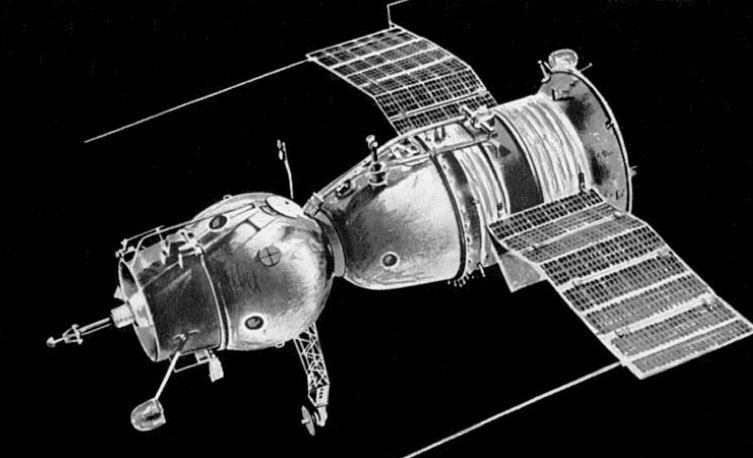
The launch of Soyuz 2 was cancelled, and all the attention was focused on bringing Komarov back to Earth. Komarov tried to start the engines for the first time on the 24th of April at 02:56 local time. His attempts were denied by the automatic control system of the spacecraft on the 16th, 17th and 18th orbits. Frustrated, Komarov started to lose his nerve as he cursed the “ominous spacecraft.” In his message to the ground station, he simply said: “Nothing in this spacecraft is working.”
Nevertheless, Komarov managed to enter Earth’s orbit during the 19th tour around the planet. At 05:59 Moscow time, landing motors were ignited to provide a secure descent for some time. After the engines stopped, a report from the Yevpatoriya station in Crimea included a message of Komarov having lost all the control of his spacecraft.
The descent module was separated with a two minutes delay from Soyuz 2. After this moment, the module was supposed to land with its parachute. While being under 8G pressure during 06:18 and 06:20, Komarov sounded very confident in his transmission. But his relief lasted only a few seconds.
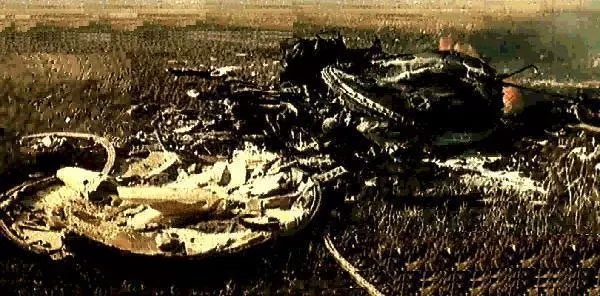
The emergency parachute was opened, but it couldn’t drag the main parachute from its chamber. The second parachute wrapped around the cordons of the emergency parachute. Soyuz 1 was descending at a speed of 640 kilometres per hour as its parachutes and sensors failed and ran out of fuel. It impacted 65 kilometres east of Orsk, the south of the Ural Mountains, with a force equal to a 2,8-ton meteor (51°21′41.67″N 59°33′44.75″E). After the flames were put out, the descent module of Soyuz 2 was reduced to 70mm debris from a 2-metre metal cabin.
There are claims related to Komarov’s last words after he desperately shouted to the ground stations when the parachutes failed. It is not known for certain that he “cursed all the people who put him inside a malfunctioning spacecraft.”
The parachute simulation:
His Last Moments Are Still A Mystery
The book, ‘Starman: The Truth Behind the Legend of Yuri Gagarin’, claims that the last words of Komarov were recorded by the US National Security Agency (NSA) based in İstanbul. The book includes the comments of Perry Fellwock from 1972, who was stationed in the facility. According to him, not only Komarov but the engineers on the ground saw his survival chance very low. Komarov claims to have talked to Prime Minister Alexei Kosygin and his wife then. He told his wife what she needed to do after his death and how to take care of their children. Fellwock describes that moment as “in total despair.” Komarov was totally lost in his last seconds, and Kosygin was crying.
Space historian Asif Siddiqi rejects most of the information given in the Starman book. The book states that the date of the Soyuz 2 mission was chosen by the Soviet leader of the day, Leonid Brezhnev, and he insisted on the date to have it on the 50th anniversary of the Bolshevik Revolution. Siddiq, on the contrary, says that the date was set by engineers of the mission, and it was first meant to be launched in 1965. The other claim Siddiqi rejects is the “video phone” call between Komarov and Kosygin, along with his wife. Videophones came into use only in 1968.
One last myth is the heroic attempt of Yuri Gagarin to replace Komarov in the last second before the mission. According to unknown sources, Gagarin appeared on the launch platform just before Komarov was about to get inside his spacecraft and offered to replace him. Yaroslav Golovanov, the Pravda correspondent who was at the scene, said: “This never happened.”
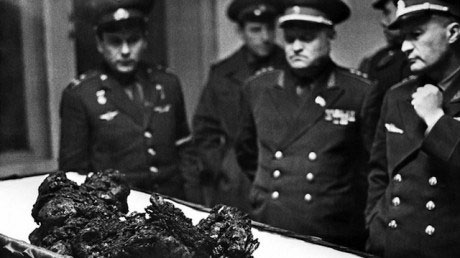
His Memory Rests On The Moon
The most significant detail made the Soyuz 1 tragedy unforgettable is the remains of Komarov found at the impact site. The photo showing the Russian officials staring upon the remains is believed to be taken before the funeral. The funeral took place on 26th of April and the ashes of Komarov were buried inside the Kremlin Wall Cemetery in the Red Square. A soldier and a cosmonaut, Komarov was awarded several medals including the Red Star Medal.
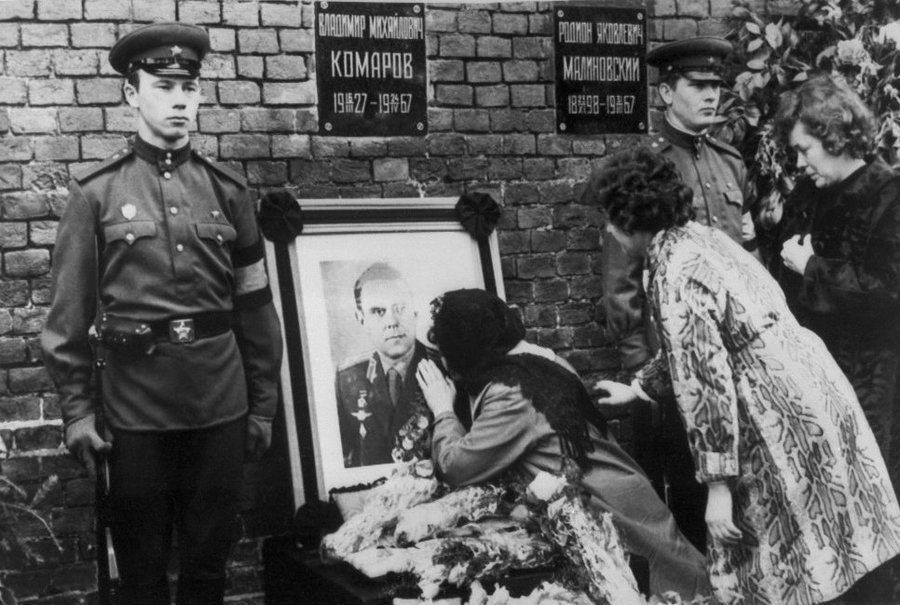
The same year Komarov lost his life, NASA astronauts Virgil Grissom, Edward White and Roger Chaffee burned to death during the Apollo 1 test. All these men significantly increased the survival chance of the astronauts and cosmonauts who came after them. Yet, the tragedies didn’t end there. In June 1971, the Soviets lost all crew members of Soyuz 11 in the last phase of the mission.
The first man to ever step on the surface of the Moon, Neil Armstrong, left a few things for the memory of Komarov and Apollo 1 astronauts. The commander of the Apollo 15 mission, David Scott, also left a plaque in the memory of all the people who lost their lives in space exploration up until that year. The plaque containing the names of 14 people sits near an astronaut model and is called “the Fallen Astronaut.”
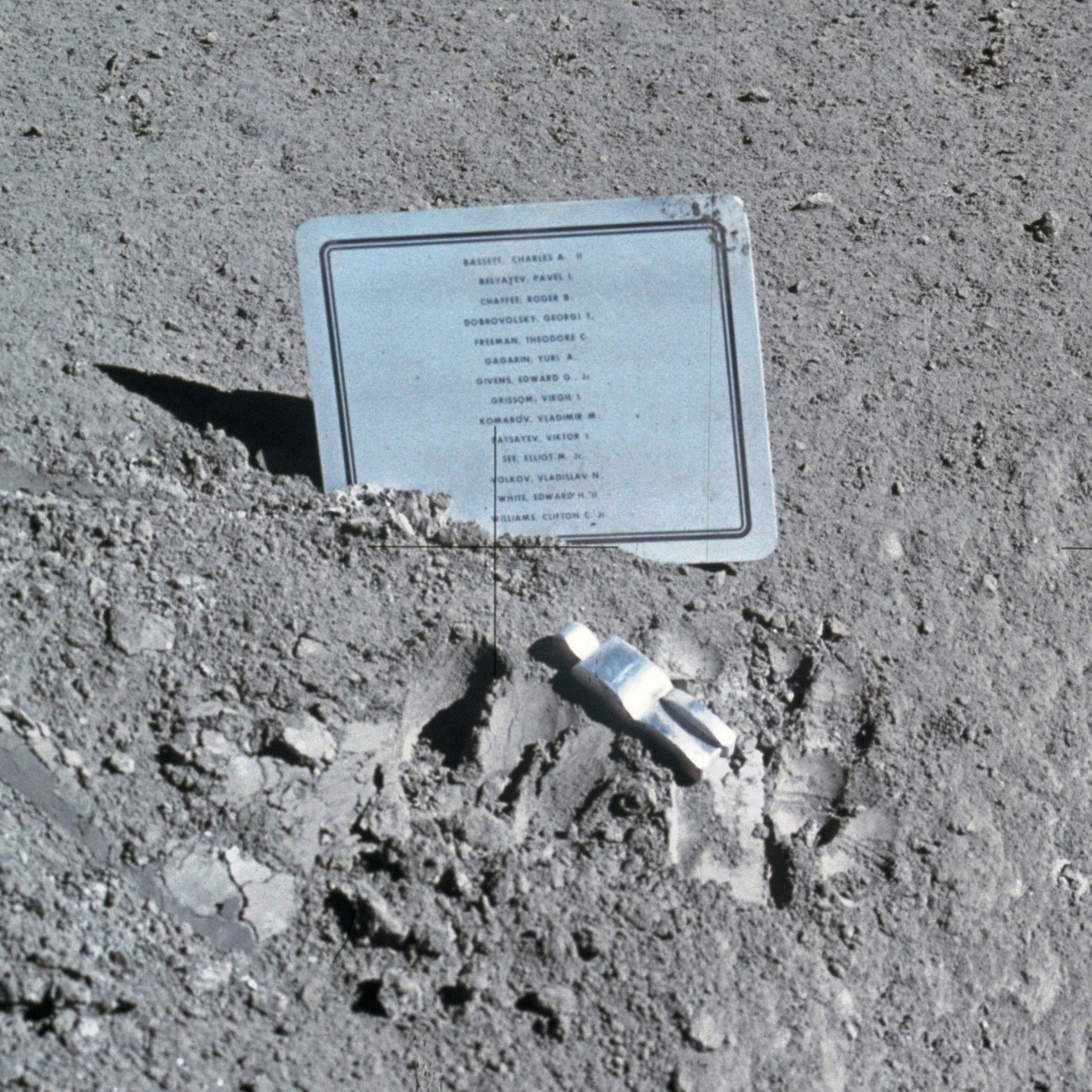
References:
[1]http://www.russianspaceweb.com/rockets_ussr_germany.html
[2]http://www.history.com/topics/cold-war/cold-war-history
[3]http://www.darpa.mil/about-us/darpa-history-and-timeline
[4]http://www.astronautix.com/k/komarov.html
[5]https://www.youtube.com/watch?v=As0fzcCs7oY
[6]http://www.russianspaceweb.com/spacecraft_manned_lunar.html
[7]http://www.spacesafetymagazine.com/space-disasters/soyuz-1/tragic-death-vladimir-komarov/
[8] http://www.npr.org/sections/krulwich/2011/05/02/134597833/cosmonaut-crashed-into-earth-crying-in-rage
[9]http://www.npr.org/sections/krulwich/2011/05/02/134735091/questions-questions-questions-more-on-a-cosmonauts-mysterious-death
[10]http://io9.gizmodo.com/5791437/what-really-happened-to-cosmonaut-vladimir-komarov-who-died-crashing-to-earth-in-1967
[10]http://rarehistoricalphotos.com/astronaut-vladimir-komarov-man-fell-space-1967/
[12]https://www.nasa.gov/mission_pages/apollo/missions/apollo1.html


